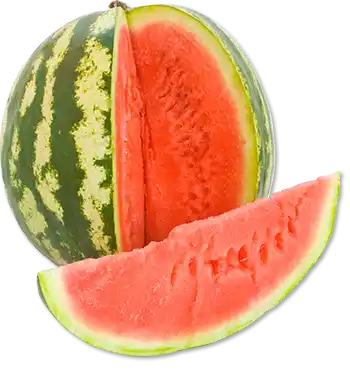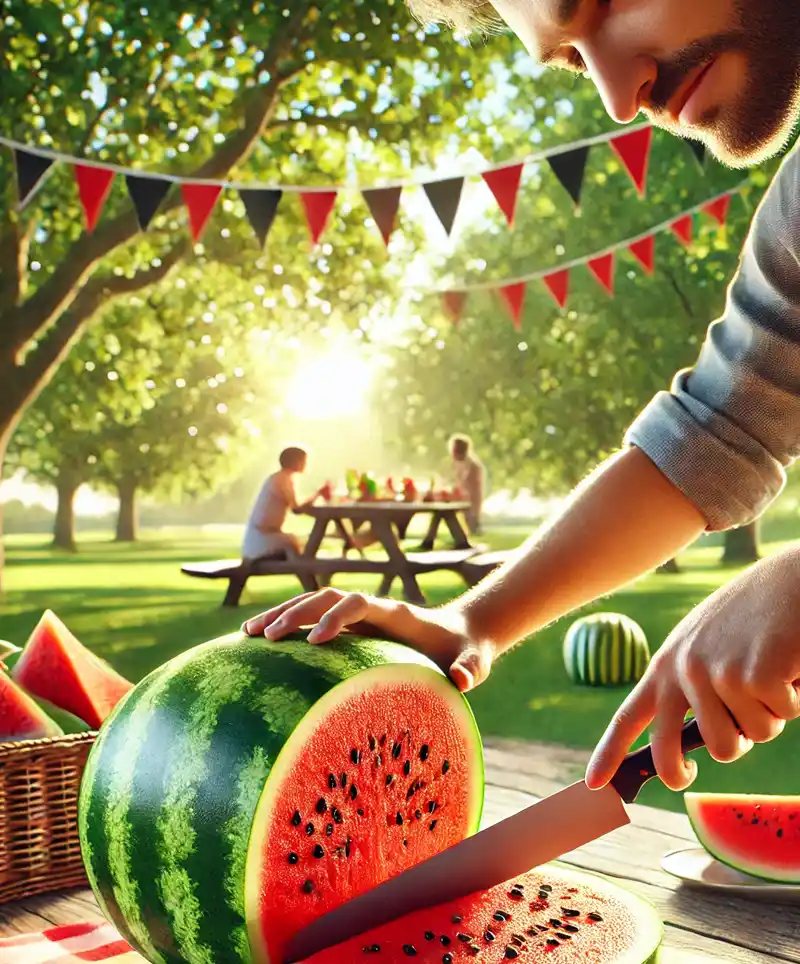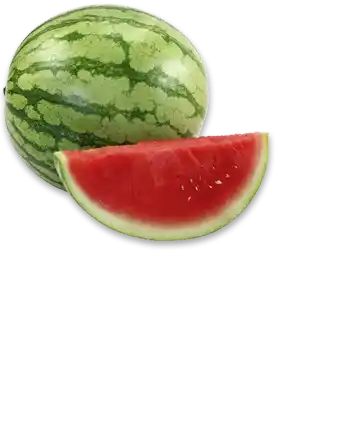A Slice of Sweet, Refreshing Fun
Ah, the watermelon: the quintessential symbol of summer, the hero of picnics, and the ultimate thirst-quencher on a hot day. National Watermelon Day, celebrated on August 3rd, is the perfect time to honor this juicy delight that has a rich history, a variety of uses, and more fun facts than seeds in a melon.
From Ancient Egypt to Your Picnic Table
Watermelons have been around for thousands of years, with their origins traced back to the deserts of Africa. Ancient Egyptians were among the first to cultivate watermelons, as evidenced by the seeds and paintings found in their tombs. These early watermelons were not the sweet, red-fleshed fruits we know today but rather bitter and hard. It took centuries of cultivation and selective breeding to develop the luscious, sweet watermelons that we enjoy now.
Fast forward to the present, and watermelons have become a global favorite, with over 1000 varieties grown worldwide. Whether you prefer the classic red-fleshed variety, the yellow or orange-fleshed versions, or the uniquely small and seedless types, there’s a watermelon out there for everyone.
What Makes Watermelons So Refreshing?
Watermelons are a hallmark of summer, known for their hydrating and refreshing qualities that make them a go-to snack during hot days. But what exactly gives watermelons their refreshing edge?
High Water Content: The most prominent feature of watermelons is their incredible water content—about 92% of the fruit is water. This high water percentage not only helps to keep you hydrated but also gives the watermelon its juicy, crisp texture. When you bite into a watermelon, the water content floods your mouth, providing immediate cooling and hydration.
Natural Sugars and Electrolytes: Watermelons are naturally sweet, containing around 6% sugar. This sweetness enhances the refreshing sensation by providing a quick source of energy. Moreover, watermelons contain important electrolytes like potassium and magnesium, which help replenish what the body loses through sweat during hot weather. These electrolytes play a crucial role in maintaining hydration and preventing heat-related ailments.
 Nutrient-Rich Composition: Beyond water and sugars, watermelons are packed with essential vitamins and antioxidants. They are an excellent source of vitamins A, B6, and C. Vitamin A is important for skin health and vision, vitamin B6 aids in brain function and mood regulation, and vitamin C boosts the immune system and skin health. The combination of these vitamins contributes to the overall feeling of rejuvenation when consuming watermelon.
Nutrient-Rich Composition: Beyond water and sugars, watermelons are packed with essential vitamins and antioxidants. They are an excellent source of vitamins A, B6, and C. Vitamin A is important for skin health and vision, vitamin B6 aids in brain function and mood regulation, and vitamin C boosts the immune system and skin health. The combination of these vitamins contributes to the overall feeling of rejuvenation when consuming watermelon.
The Antioxidant Powerhouse: Watermelons are rich in lycopene, an antioxidant that gives the fruit its red color. Lycopene has numerous health benefits, including reducing inflammation and protecting against certain types of cancer and heart disease. This powerful antioxidant not only contributes to health benefits but also adds to the refreshing taste by complementing the natural sugars and acidity of the fruit.
Amino Acids and Muscle Relief: Interestingly, watermelons contain an amino acid called citrulline, which has been shown to aid in reducing muscle soreness. After a long day in the sun or a strenuous workout, munching on watermelon can help soothe tired muscles, making it a perfect post-activity snack.
Sensory Experience: The sensory experience of eating watermelon also adds to its refreshing nature. The cool, crisp texture, combined with its sweet and subtly tangy flavor, engages multiple senses. This multisensory appeal heightens the feeling of refreshment and satisfaction, making it a beloved summer treat.
Watermelons are more than just a juicy fruit; they are a powerhouse of hydration, nutrients, and antioxidants, all of which combine to create the ultimate refreshing experience. Whether you're eating it straight from the rind, blending it into a smoothie, or incorporating it into a salad, watermelon is the perfect way to cool down and enjoy the summer heat.
Creative Ways to Celebrate National Watermelon Day
Watermelon isn’t just for eating; it’s a versatile fruit that can be enjoyed in many ways. Here are some fun ideas to make your National Watermelon Day a memorable one:
- Watermelon Carving: Move over, pumpkins! Watermelon carving is the new trendy activity. Create intricate designs or simple shapes – either way, it’s a fun and artistic way to enjoy your fruit.
- Watermelon Smoothies: Blend watermelon with a bit of ice and mint for a refreshing smoothie that’s perfect for cooling down.
- Watermelon Salad: Combine watermelon cubes with feta cheese, mint, and a drizzle of balsamic glaze for a savory-sweet salad that’s a hit at any summer gathering.
- Watermelon Contests: Organize a seed-spitting contest or a watermelon-eating competition. It’s a surefire way to bring laughter and joy to any celebration.
Fun Facts and Trivia
- Dual Classification: Watermelons are classified both as a fruit and a vegetable. They belong to the Cucurbitaceae family, which includes cucumbers, pumpkins, and squash.
- Water Content: Watermelons are made up of about 92% water, making them incredibly hydrating and refreshing.
- World Record: The heaviest watermelon ever recorded weighed 350.5 pounds and was grown by Chris Kent of Sevierville, Tennessee, in 2013.
- Ancient Origins: Watermelons were first cultivated in Africa and are depicted in ancient Egyptian hieroglyphics, dating back over 5,000 years.
- Variety of Colors: While the most common watermelon flesh color is red, they can also come in yellow, orange, and even white.
- Seedless Watermelons: Seedless watermelons are not genetically modified. They are created through a natural hybridization process that results in immature, edible white seeds.
- Longevity in Space: Watermelons have even been grown in space! Astronauts on the International Space Station have experimented with growing watermelon plants as part of their research on sustainable food sources.
- Cultural Symbolism: In China and Japan, watermelon is often given as a hostess gift. In Vietnam, watermelon seeds are a popular snack during the Lunar New Year.
- Historical Significance: Watermelons were used by early explorers as a natural canteen. They would carry watermelons to use as a source of hydration on long sea voyages.
- Health Benefits: Watermelons are rich in vitamins A, B6, and C, and contain antioxidants like lycopene, which is known for its potential to reduce the risk of certain cancers and heart disease.
- Watermelon Festivals: Many towns across the United States host annual watermelon festivals, celebrating the fruit with activities like watermelon seed spitting contests, watermelon carving, and eating competitions.
- Economic Impact: Watermelons are a significant crop in the United States, with major production in states like Florida, Texas, Georgia, and California. The U.S. produces over 4 billion pounds of watermelon annually.
 And let’s not forget about seedless watermelons. Contrary to what some might think, seedless watermelons are not genetically modified. They’re created through hybridization, a natural cross-breeding process that results in a melon with immature, white seeds that are perfectly edible.
And let’s not forget about seedless watermelons. Contrary to what some might think, seedless watermelons are not genetically modified. They’re created through hybridization, a natural cross-breeding process that results in a melon with immature, white seeds that are perfectly edible.
National Watermelon Day is more than just a celebration of a delicious fruit; it’s a reminder of the joys of summer, the importance of hydration, and the simple pleasures of life. Whether you’re enjoying a slice at a picnic, blending it into a smoothie, or just marveling at its juicy sweetness, watermelon brings a slice of happiness to our lives.
So, on August 3rd, grab a watermelon, gather your friends and family, and indulge in the delightful experience of this wonderful fruit. Happy National Watermelon Day!
Please Share our Content






 Nutrient-Rich Composition: Beyond water and sugars, watermelons are packed with essential vitamins and antioxidants. They are an excellent source of vitamins A, B6, and C. Vitamin A is important for skin health and vision, vitamin B6 aids in brain function and mood regulation, and vitamin C boosts the immune system and skin health. The combination of these vitamins contributes to the overall feeling of rejuvenation when consuming watermelon.
Nutrient-Rich Composition: Beyond water and sugars, watermelons are packed with essential vitamins and antioxidants. They are an excellent source of vitamins A, B6, and C. Vitamin A is important for skin health and vision, vitamin B6 aids in brain function and mood regulation, and vitamin C boosts the immune system and skin health. The combination of these vitamins contributes to the overall feeling of rejuvenation when consuming watermelon. And let’s not forget about seedless watermelons. Contrary to what some might think, seedless watermelons are not genetically modified. They’re created through hybridization, a natural cross-breeding process that results in a melon with immature, white seeds that are perfectly edible.
And let’s not forget about seedless watermelons. Contrary to what some might think, seedless watermelons are not genetically modified. They’re created through hybridization, a natural cross-breeding process that results in a melon with immature, white seeds that are perfectly edible.








 "Sláinte!" is a traditional Irish expression used as a toast, equivalent to "Cheers!" in English.
"Sláinte!" is a traditional Irish expression used as a toast, equivalent to "Cheers!" in English.